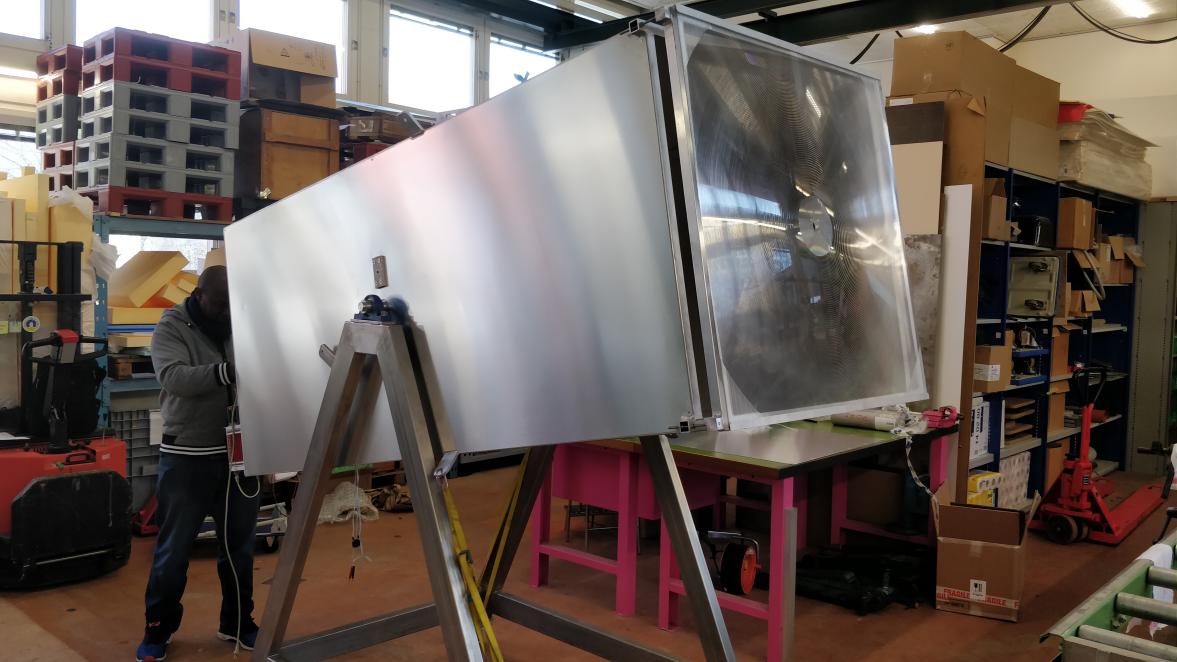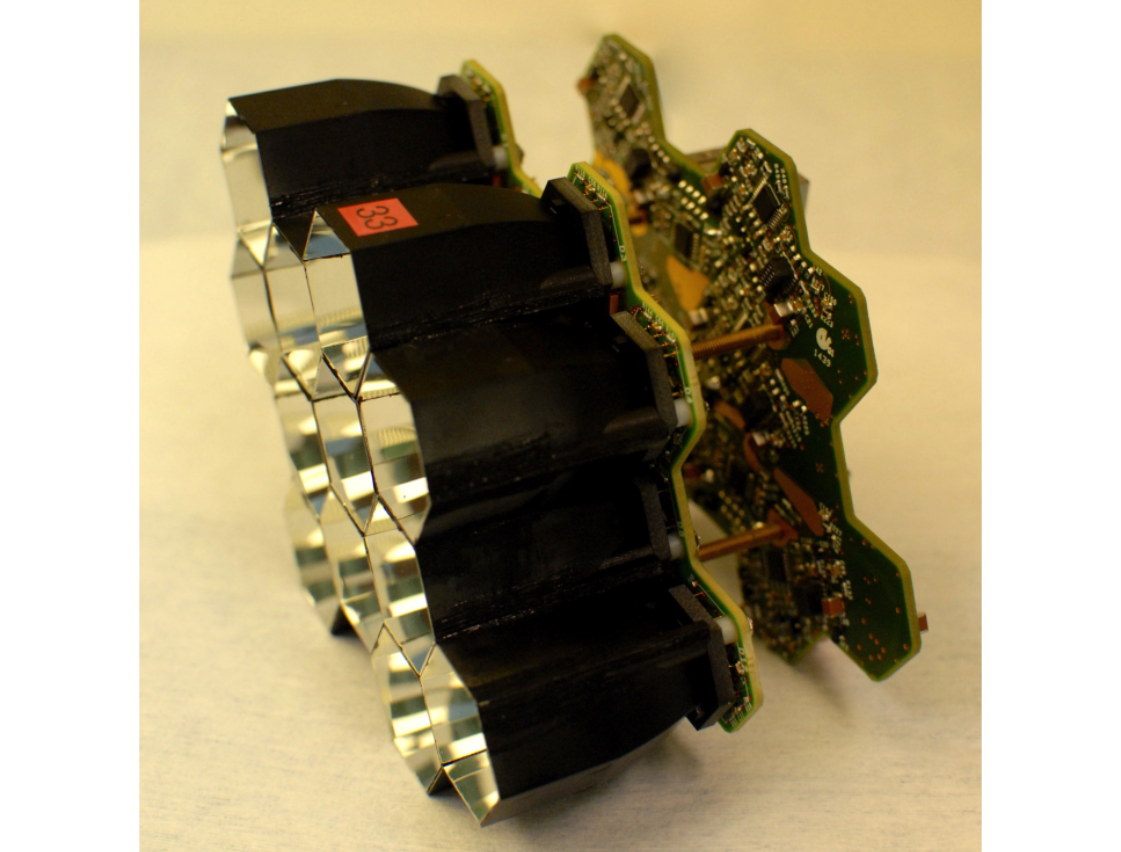
 The mini-telescope was developed for outreach purposes and to investigate the behavior of a readout ASIC coupled to large SiPM sensors. The outreach scope is to increase the interest in gamma-ray astronomy, cosmic rays, as well as detector physics. This project is the result of a collaboration between the Multi-Messenger High-Energy Astrophysics group of the Particle Physics Department (DPNC) and the Department of Astronomy at the University of Geneva.
The mini-telescope was developed for outreach purposes and to investigate the behavior of a readout ASIC coupled to large SiPM sensors. The outreach scope is to increase the interest in gamma-ray astronomy, cosmic rays, as well as detector physics. This project is the result of a collaboration between the Multi-Messenger High-Energy Astrophysics group of the Particle Physics Department (DPNC) and the Department of Astronomy at the University of Geneva.
If you are interested in more detail please contact A. Nagai: This email address is being protected from spambots. You need JavaScript enabled to view it.
The mini-telescope is composed by a mini-camera, a UV-sensitive Fresnel lens (1m2) and a supporting structure. The picture above shows the mini-telescope and Theodore Rodrigue Njoh Ekoume, the PhD who mostly contributed to this work. Currently, it is installed at the Astronomical Observatory of Geneva in Sauverny. The mini-camera is built by 12 modules, see below.

The mini-camera photosensitive plane consiting of 12 modules.

One module with the light-guides in plastic coated with reflecting dichroic layers, the preamplifier board with the sensors and the slow control board.
Each of the 12 Hexagonal SiPM devices (144 SiPMs in total) is designed in collaboration with Hamamatsu for the SST-1M telescope. The SST-1M is one of the projects proposed for the construction of 70 small size teelscopes for the Cherenkov Telescope Array in Chile. Each SiPM device is coupled with a lightguide cone to guide the light on the sensor and to achieve the desired pixel size and field of view. To satisfy stable operational conditions, the mini-camera is cooled by 16 powerful fans mounted in “push-pull” mode. The data acquisition system is based on 2 Front End Boards (FEB). Each FEB is based on 3 Citiroc ASICs. Citiroc is a 32-channel ASIC designed by Weeroc to readout SiPM devices. It allows triggering down to a charge level equivalent to 1/3 p.e. and provide a charge measurement using a peak sensing technique. To provide a wide dynamic range for the charge measurement, each Citiroc channel has two preamplification stages, one with high gain (HG) to detect low light intensity signals and another one with low gain (LG) to detect high light intensity signals.
The graphical user interface was developed in Python, to visualize the detected events and control the mini-camera parameters (trigger rate, temperature, Citiroc gain, etc.) and if necessary adapt them for observation conditions. Below a typical observed event is presented:
